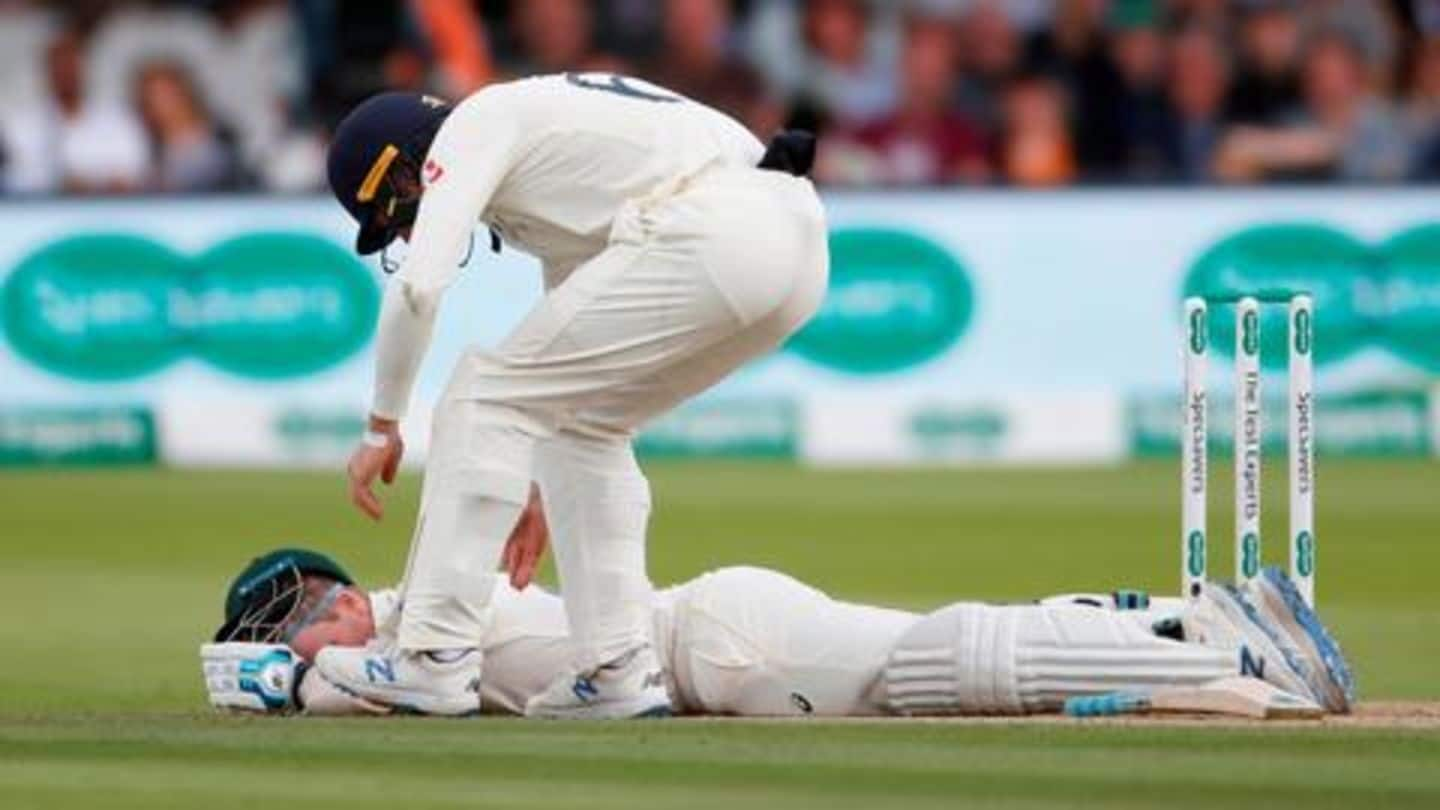
Cricket Australia could make neck guards compulsory
What's the story
The world was shocked when Australian batsman Steve Smith was struck by a lethal bouncer from Jofra Archer a couple of days back. As a result, he suffered a mild concussion, while he is in doubt for the upcoming Leeds Test of Ashes 2019. This has led to discussions regarding the extra safety of batsmen, in the form of mandatory neck guards.
The sotry
Smith suffers concussion, courtesy lethal Archer bouncer
The just-concluded Lord's Test saw Smith being struck at the back of his neck by a bouncer from Archer. This resulted in Smith collapsing on the ground momentarily and leaving, before returning to complete his innings. Following his dismissal for 92, he was ruled out of the remainder of the match, citing concussion. Notably, his helmet did not have the neck guard.
Hughes tragedy
Similar incident had led to the demise of Phillip Hughes
While Smith might find himself lucky to have survived any serious trauma, the incident did remind the horrific tragedy of Phillip Hughes. Hughes was injured in a similar manner during a 2014 Sheffield Shield game off a bouncer by Sean Abbot. Hughes battled life and death in the hospital a couple of days before he passed away as the cricketing fraternity grieved.
Neck guards
ICC introduced neck guards following Hughes tragedy
Following the unfortunate tragedy of Hughes, the ICC introduced neck guards, which were attached at the back of the helmet of the batsman. Meanwhile, Cricket Australia (CA) made the neck guards compulsory for their domestic matches. However, the ICC did not make the neck guards mandatory and was used by only some specific players. The neck guards are also known as stem guards.
Information
Why was Smith not wearing neck guard?
There were questions being asked by a number of people as to why Smith had refrained from wearing the neck guard, which is an important safety element in modern cricket. Meanwhile, Smith explained that wearing it made him claustrophobic and uncomfortable.
Mandate
Why has ICC not mandated the neck guards?
As far as the mandates of the neck guards are concerned by the ICC, Cricket Australia's sports science chief Alex Kountouris recalled that it was just a matter of time before that happened. "There was no real knowledge of the mechanism, what exactly the helmet manufacturers were trying to protect or stuff like that," Kountouris told the Sydney Morning Herald.
Quote
New research has led to new guards being manufactured
"But, since that time we have done a lot of research. We actually have a pretty good understanding of that now. Beforehand, we didn't know the right equipment we were endorsing," added Kountouris.
Upgraded guards
Upgraded guards to be up for trial within six months
Kountouris further said that the drawback was regarding the right product being manufactured. And, now that it has been manufactured, it can be put up for trial within six months. "When we get to that point, I think we'll be comfortable to say: 'Let's make it a requirement'. There is still a little time to go but we are not far away," concluded Kountouris.